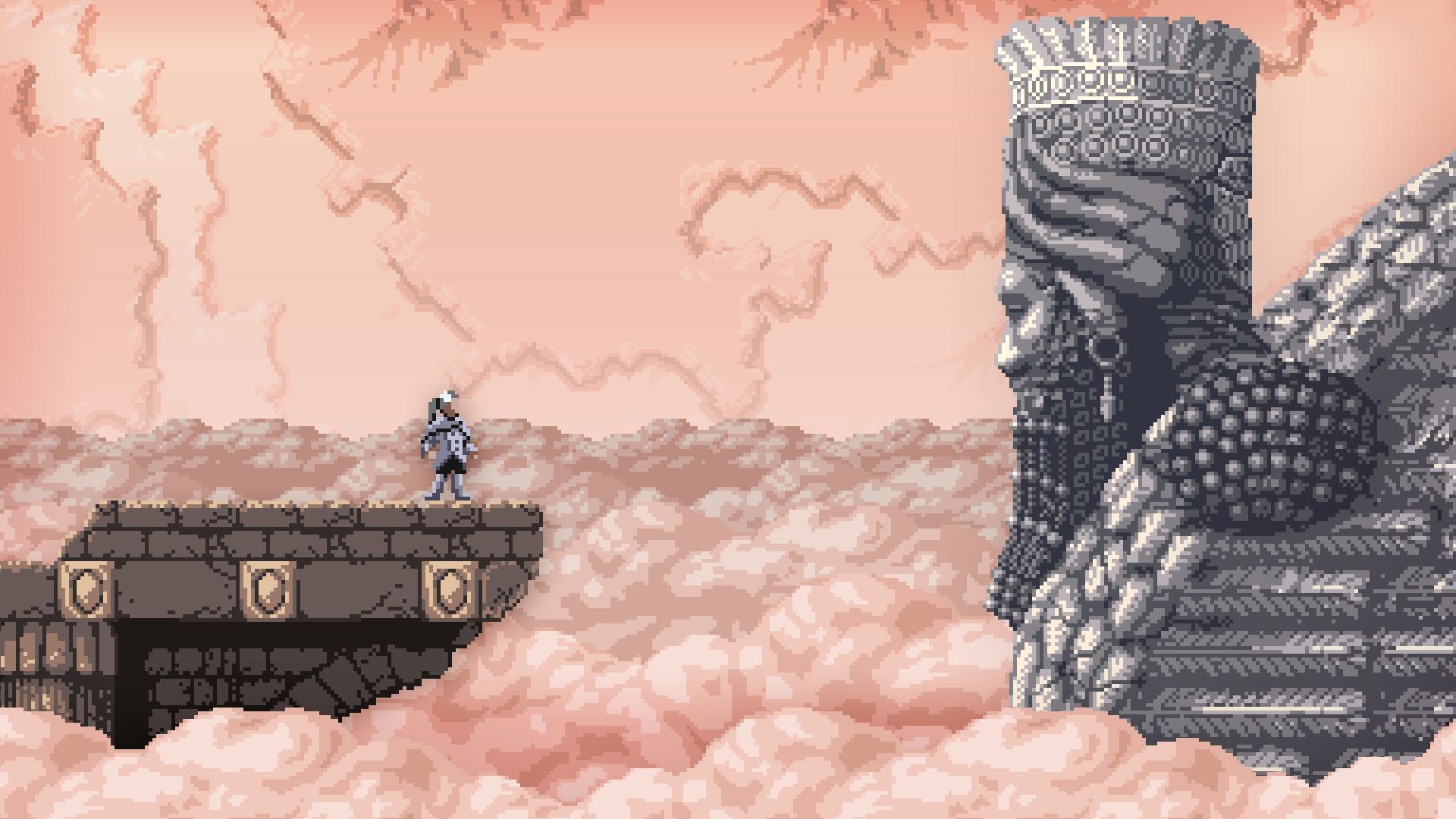Our Verdict
A bold and ambitious sequel set in a satisfying, densely connected world.
PC Gamer's got your back
What is it? An open-ended platformer set in an intricate alien environment.
Expect to pay $20
Developer Thomas Happ Games LLC
Publisher Thomas Happ Games LLC
Reviewed on Intel Core i7-10750H, 16GB RAM, GeForce RTX 2060
Multiplayer? None
Link Official site
I can remember the last time I felt excited for a Metroidvania. It was Axiom Verge, a game inspired more by the original Metroid than the other half of the equation, Symphony of the Night. Like Metroid, Axiom was set in a dark, mysterious world that felt particularly open to investigation, in part thanks to a device called the Axiom Disruptor. This was a gun that let you ‘hack’ parts of the game world, turning foes into friends or clearing glitched-out obstacles. Never mind that it was really another disguised key in a genre crammed with overt and covert locks, it gave the illusion of letting the player mess rebelliously with the game code.
I mention the Disruptor—such an iconic element of the original game—because it’s absent from this daring sequel, replaced by a similar hacking tool that’s perhaps more versatile, but less exciting to use. It’s emblematic of a game that has changed almost every aspect of its predecessor, while still somehow retaining its soul.
Once again, you play as a human transported to an alien world: a land full of killer drones, where two civilizations once fought a devastating war. It’s a philosophical story that touches on artificial intelligence and a theory of multiple worlds, but told so lightly it can be difficult to follow. The heavier ruminations are delegated to collectable documents, which do fill in many of the gaps.
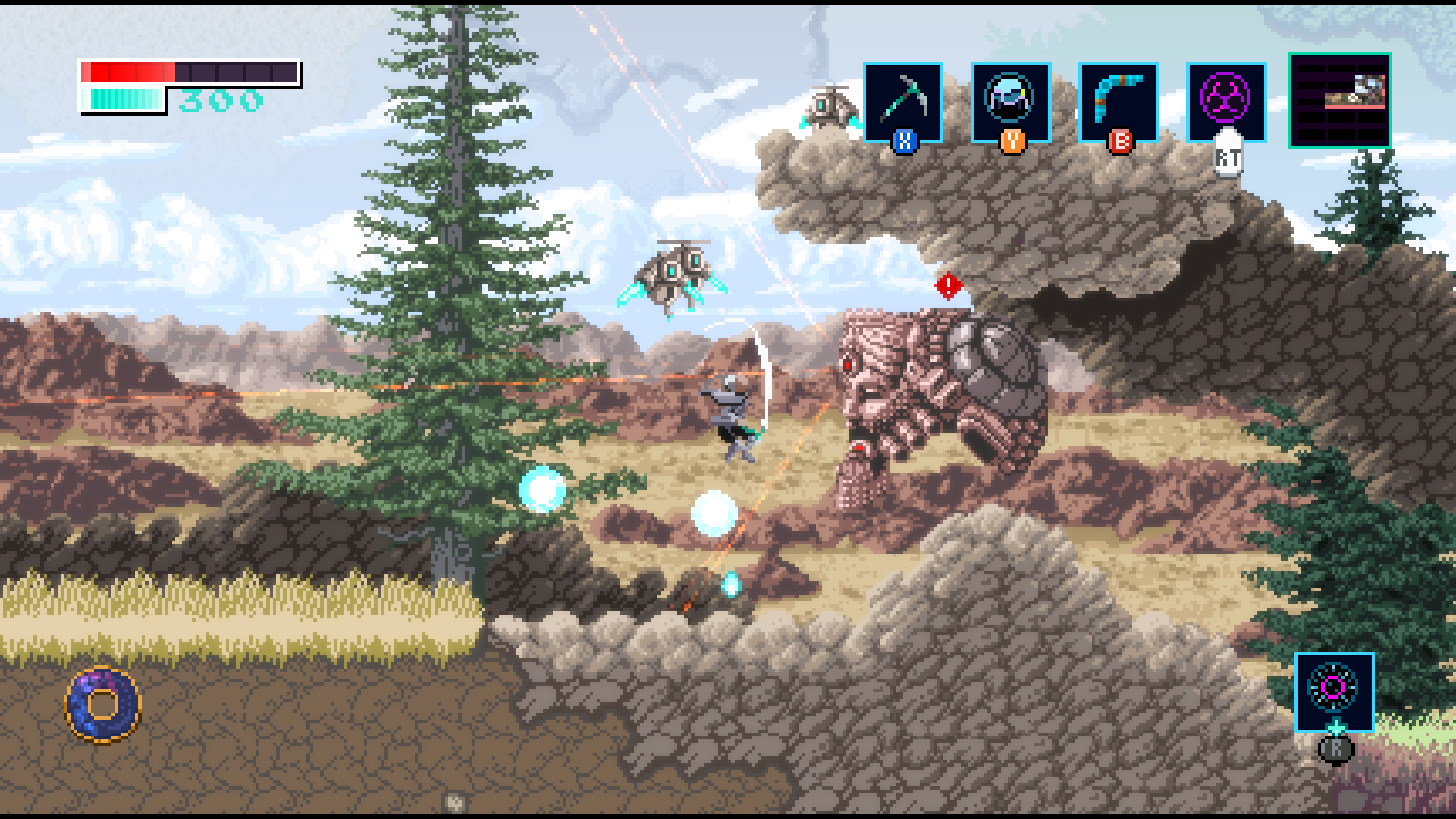
The storytelling is so restrained it doesn’t even tell you who you are, or why you’ve come to Antarctica—or so I thought before I discovered the intro sequence, which only plays if you don’t press anything on the main menu. By the way, you’re Indra Chaudhari, a billionaire CEO who has been summoned to Antarctica—and ultimately the alien world—to locate her daughter.
The melee combat is fine. It’s good enough, if slightly less satisfying than the bullet cacophony of the previous game
Where Axiom Verge was largely subterranean—full of stark black backgrounds and pulsating alien flora and fungi—its sequel is set on a more conventional overworld. Its backdrops suggest a vastness beyond the 2D playing area, while even its underground is rendered in greater detail. If the original evoked Metroid’s sense of subterranean dread, then Axiom Verge 2 leans more into the Symphony side of things, offering a sumptuous, detailed environment that’s still rewarding to hack and slash your way around.
Notice I didn’t say ‘shoot’. The many guns of the original have been excised completely, leaving only melee weapons and a Zelda-style boomerang. It’s a huge change—imagine Samus swapping her arm-cannon for an ice axe and a bit of wood—but, thankfully, the melee combat is fine. It’s good enough, if slightly less satisfying than the bullet cacophony of the previous game.
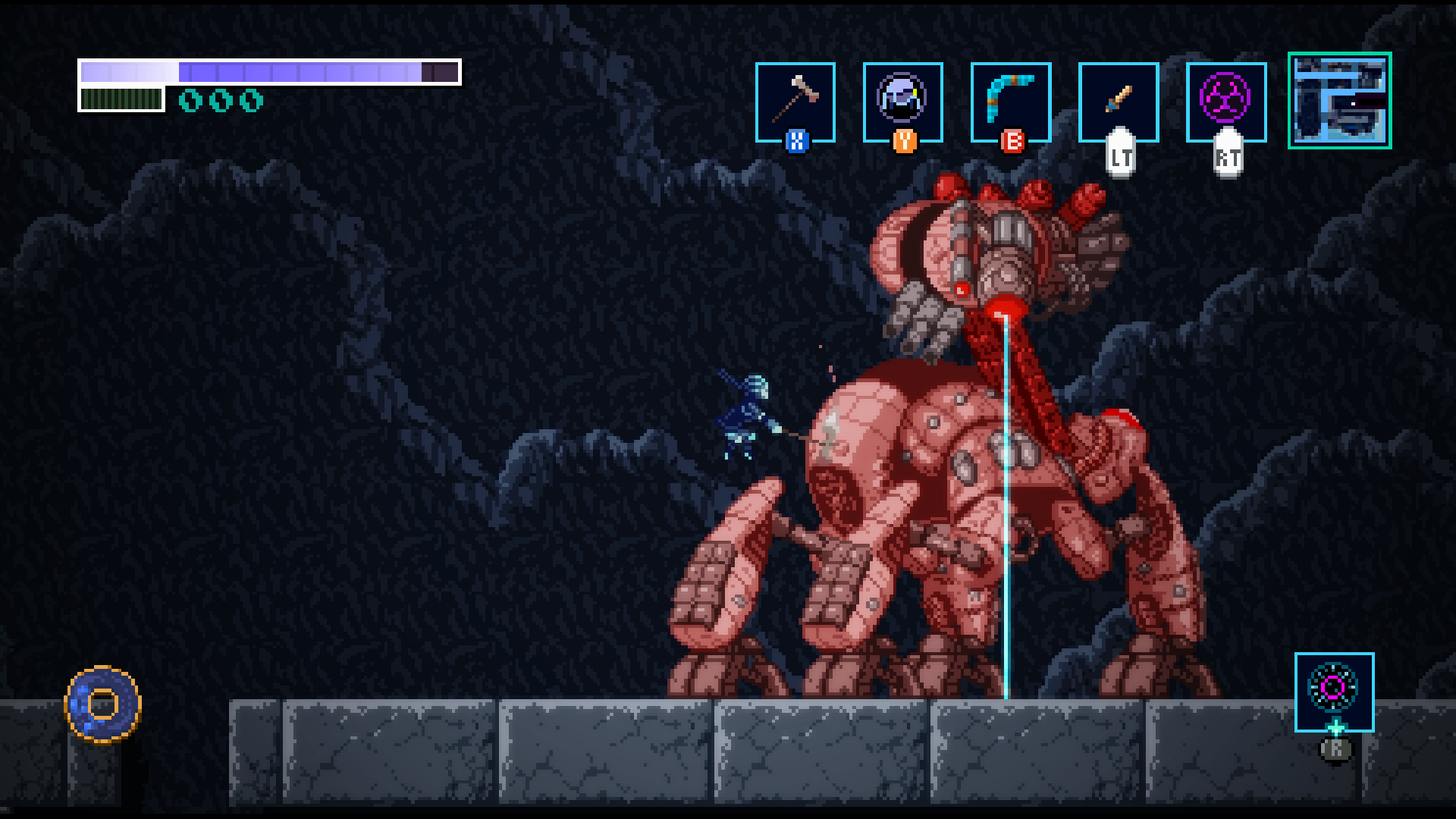
There’s just as much fighting here, with one key exception: there are no boss fights in Axiom Verge 2. Oh, there’s a perfunctory final battle, and some optional scraps against unique enemies. But there are no locked-off boss arenas—two encounters with the villain excluded—and no giant health bars to whittle down before you can progress. Axiom Verge 2 doesn’t want to interrupt the flow of exploration. As someone who dreads the bosses in Hollow Knight, for that very reason, I’m very much in favour of this change.
It feels weird to say that combat is downplayed, in a game brimming with diverse enemies, but that’s only because the exploration side has received such a significant rework. The newly fleshed-out world encompasses several distinct biomes, linking together in a more organic way than its boxy predecessor. However, its standout feature is actually borrowed from The Legend of Zelda: there’s another world running parallel to this one.
You’ve seen the feature before in games, probably in other Metroidvanias, where the two dimensions are just reskinned versions of each other. Not so here. The Breach is a separate map—laid atop, or below, the primary one—but with a mostly different layout, and a wildly different visual style: super low-res and with a colour palette that hasn’t been seen since '70s sci-fi.
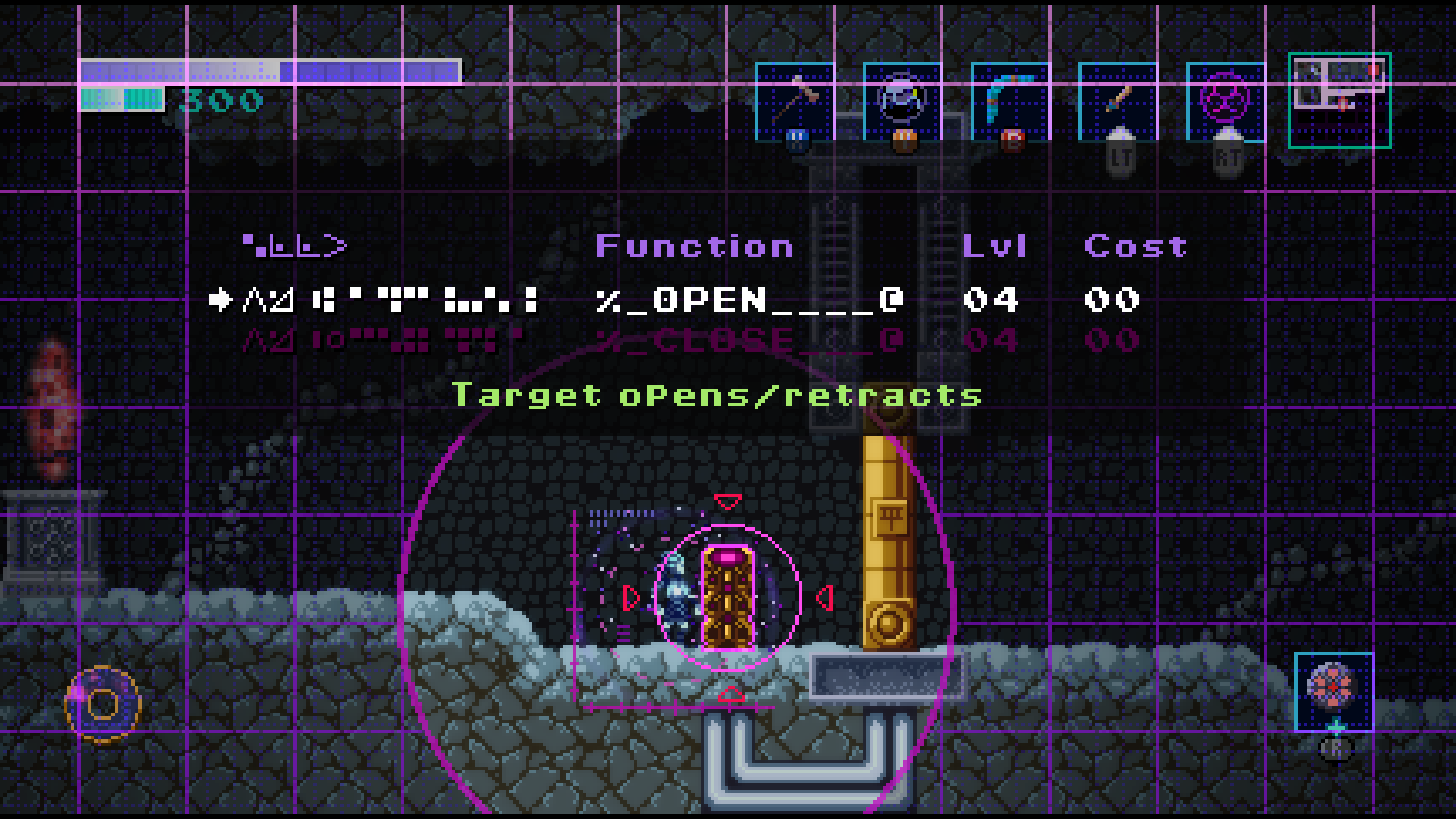
Unexplored map sections are actually devious navigation puzzles
In the more cramped setting of the Breach, you control your adorable drone sidekick, bashing enemies and dodging traps while listening to synth prog-rock cover versions of an already extraordinary soundtrack. It’s an intoxicating place, contrasting nicely with the more grounded nature of the overworld.
The Breach really blows open the game, particularly when you gain more freedom in travelling between the worlds. Axiom Verge 2—more so than its predecessor—is a game where unexplored map sections are actually devious navigation puzzles. Which ability do I need here, and which part of the map should I approach this obstacle from? Can I even get around this barrier yet, or should I come back later? Discovering the solution is usually more satisfying than finding whatever trinket lies in wait as a reward, because you’ve been entrusted to discover it for yourself.
There are times when the game could be more accommodating. Several platforming leaps where success finally, mercifully came after about a dozen failed attempts, made while I wrestled with the world’s most fiddly grappling hook. Unless there was an ability I missed (and I managed to explore most of the map and finish the game without it), these half-dozen jumps really do require unforgiving, almost pixel-perfect precision, in a way that stands out from the rest of the game.
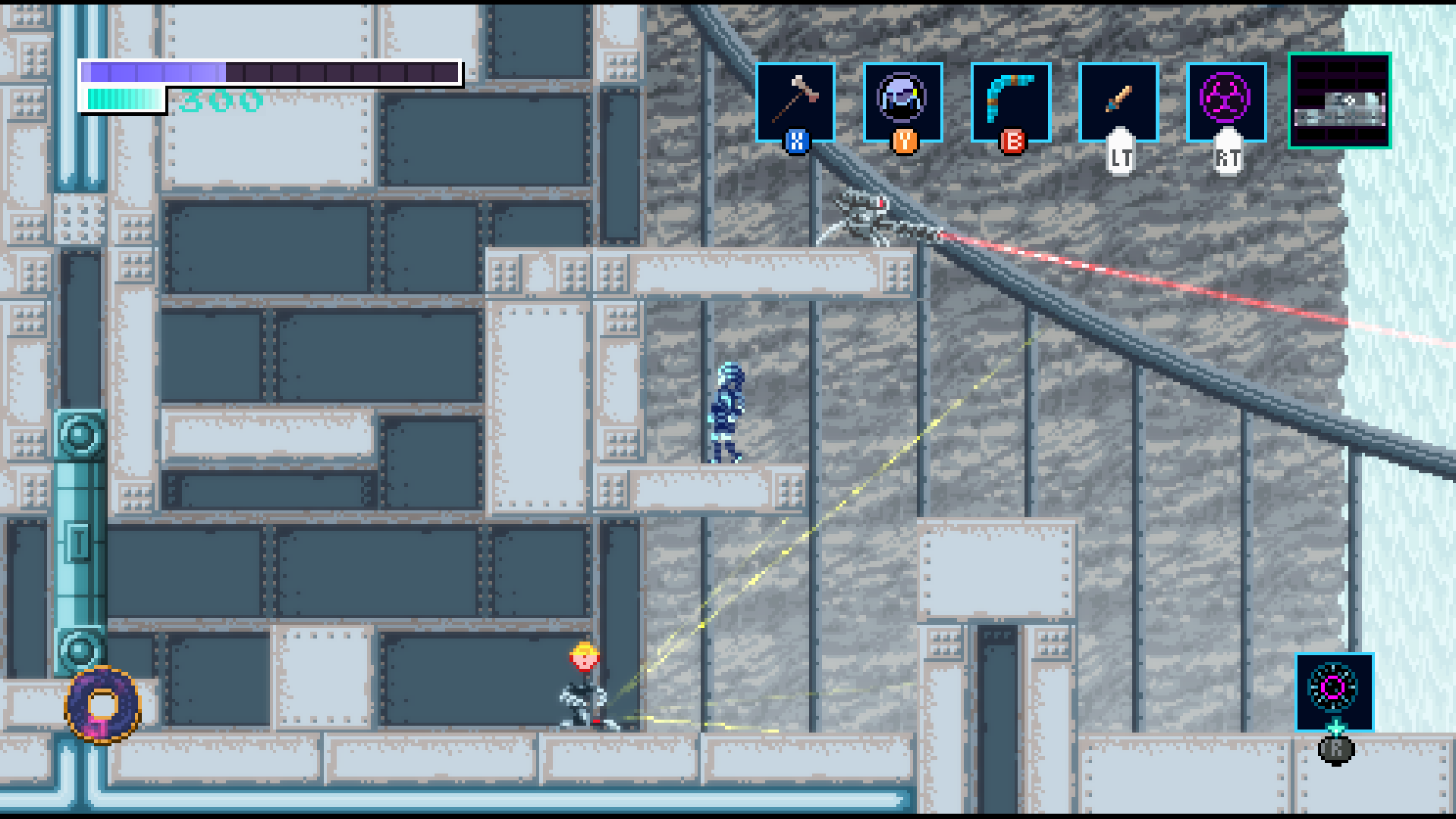
I should probably also mention that I got totally stuck at one point—as I did in the first game—but here it took much less time to fathom my way out. Almost from the start, you can sprawl in multiple directions and butt your head against multiple brick walls. However, this sequel is a little better at offering guidance. There’s a new on-screen compass to offer (reassuringly vague) assistance, but it’s also easier to orient yourself inside these more organic worlds.
I can’t decide if it’s a better game—it’s certainly a vastly different, more ambitious one. Axiom Verge 2 builds on the work of its predecessor, but also Symphony of the Night and A Link to the Past, to create one beautifully intricate space to explore.
A bold and ambitious sequel set in a satisfying, densely connected world.
Tom loves exploring in games, whether it’s going the wrong way in a platformer or burgling an apartment in Deus Ex. His favourite game worlds—Stalker, Dark Souls, Thief—have an atmosphere you could wallop with a blackjack. He enjoys horror, adventure, puzzle games and RPGs, and played the Japanese version of Final Fantasy VIII with a translated script he printed off from the internet. Tom has been writing about free games for PC Gamer since 2012. If he were packing for a desert island, he’d take his giant Columbo boxset and a laptop stuffed with PuzzleScript games.
